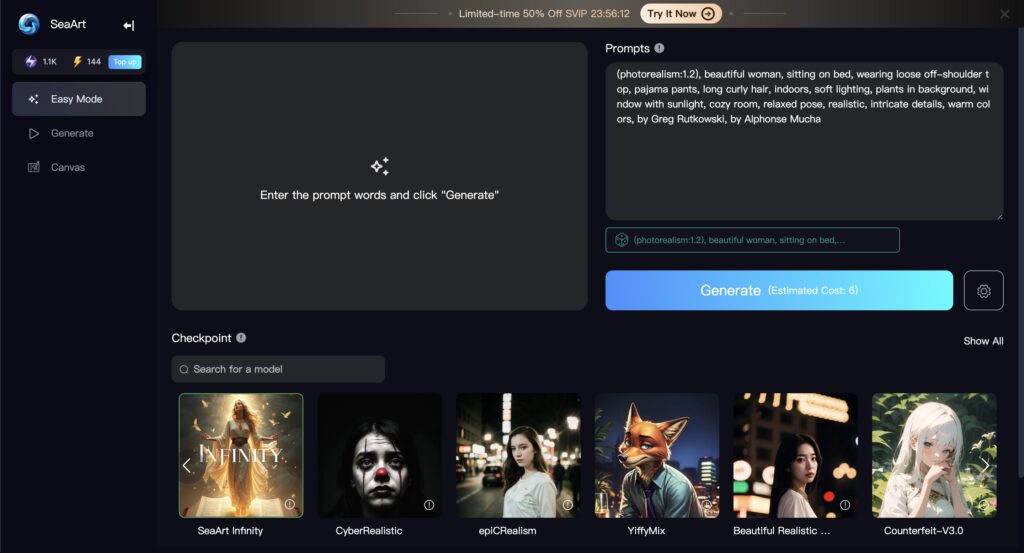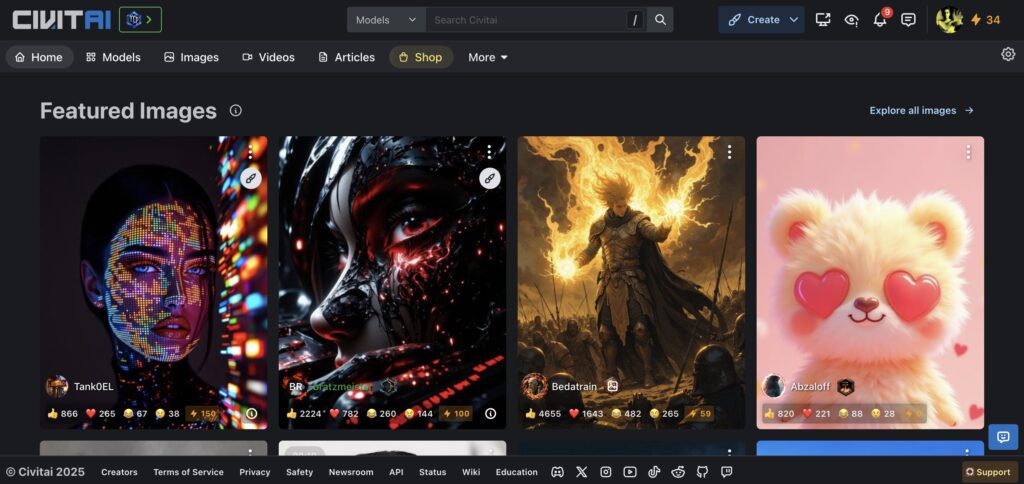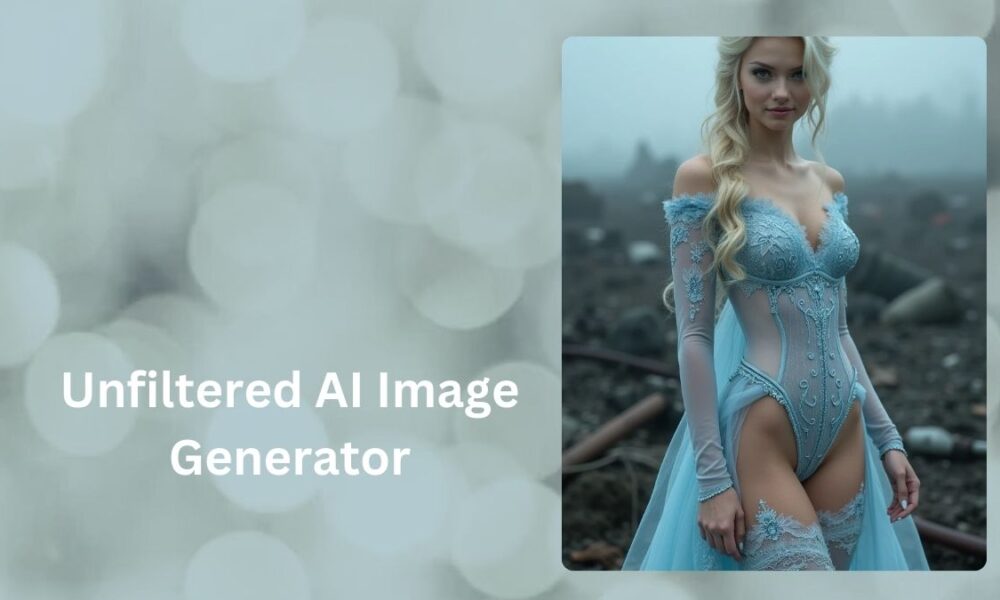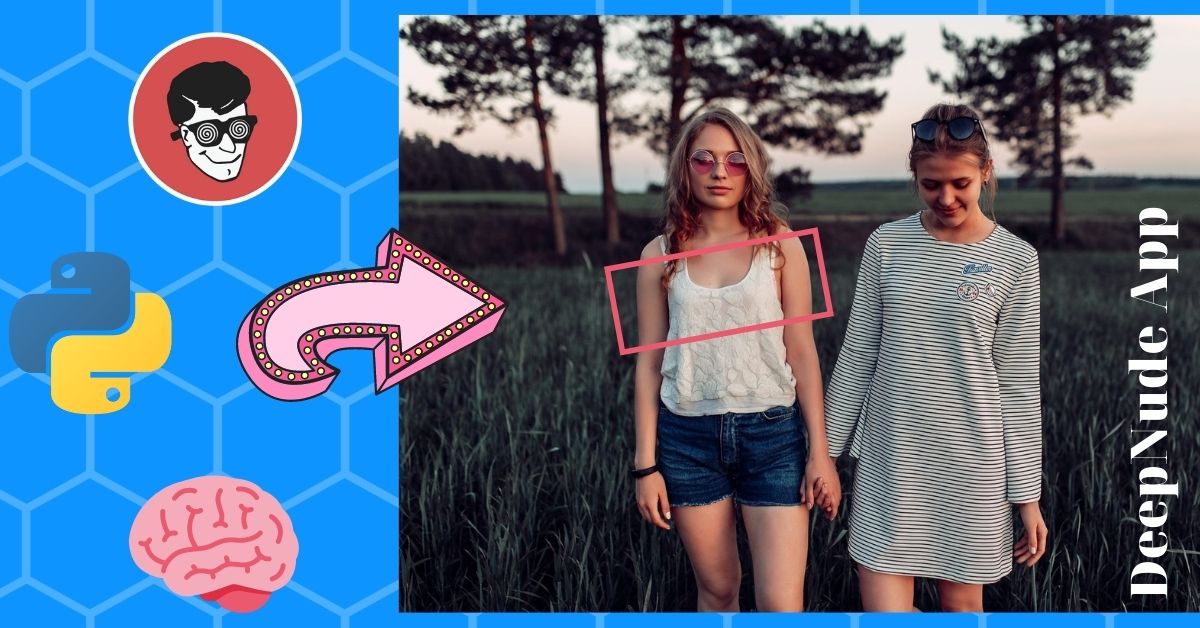What Even Is an Unfiltered AI Image Generator?
Imagine having a digital artist who never says “no.” Unfiltered AI image generators are exactly that—tools that create images from text prompts without blocking “risky” content. They’re like the wild cousins of apps like DALL-E or MidJourney, skipping the guardrails to let users generate anything from surreal landscapes to… well, stuff that’d make your grandma blush.
Artists and rebels love them for pushing creative boundaries. But critics argue they’re Pandora’s box for deepfakes, copyright chaos, and worse. Let’s unpack the hype—and the headaches.
Apps to Try for Free
- AINUDEZ – get 5 free tries
- SeaArt

How These AI Tools Actually Work (No Jargon, Promise)
Picture this: You type “a dragon sipping espresso on Mars,” and the AI scrambles to paint it. Under the hood, tools like Stable Diffusion or DALL-E use something called diffusion models—systems trained on millions of images to “learn” how objects, styles, and even emotions look.
But here’s the kicker: Unfiltered versions ditch the safety filters. While standard AI tools block requests like “naked mole rat in a tuxedo” (thanks, corporate lawyers), unfiltered tools shrug and say, “Sure, why not?”

The Good, The Bad, and The Ugly: Top Tools in 2025
- Joy AI Generator (paid plans)
- The Good: 10 Free Tries.
- Stable Diffusion (Unfiltered Mode)
- The Good: Free, open-source, and wildly customizable. Want a neon giraffe? Done.
- The Catch: You need tech skills to tweak it, and there’s no “undo” button for ethical oopsies.
- DALL-E’s Underground Tweaks
- The Good: Mind-blowing detail for prompts like “cyberpunk sushi chef.”
- The Catch: Unofficial “unfiltered” hacks break OpenAI’s rules. Use at your own risk.
- MidJourney’s “Artistic Freedom” Mode
- The Good: Gorgeous, painterly vibes. Think Van Gogh meets sci-fi.
- The Catch: Bans politics, violence, and anything that smells like trouble.
- Dezgo supports Flux LoRAs created with a wider range of training software.
- The Good: Free, painterly vibes. Think Van Gogh meets sci-fi.
Pro Tip: Open-source tools = total freedom but total responsibility. Proprietary apps = safer, but with training wheels.
The Dark Side: Why Unfiltered AI Keeps People Up at Night
Let’s get real. Unchecked AI isn’t all rainbows and robot cats. Here’s what keeps experts sweating:
- Deepfakes That Feel Too Real
Imagine a video of your boss ranting about pineapple pizza… except they never did. Unfiltered AI can clone voices, faces, and mannerisms—fast. Scammers already use this for fake celebrity endorsements (looking at you, “Elon Musk” crypto scams). - Artists Getting Ghosted
AI can mimic living artists’ styles without permission. One photographer sued after finding AI copies of her work floating online. Ouch. - The Exploitation Trap
No filters mean no brakes on generating harmful or explicit content. It’s like handing a flamethrower to a toddler. - Bias on Steroids
AI trained on biased data? It’ll spit out stereotypes. Ask for “a CEO” and get 90% middle-aged men in suits. Yikes.
How to Use Unfiltered AI Without Becoming a Villain
Want to play with fire without burning down the internet? Here’s your survival kit:
- Cross-Check Everything
Tools like Google’s About This Image help spot AI fakes. If it feels sketchy, it probably is. - Credit Where It’s Due
If your AI art rips off someone’s style, shout them out. Better yet, collaborate with real artists! - Watermark Like a Pro
Slap a “Made by AI” tag on your work. Transparency builds trust—and keeps you out of court. - Stay in Your Lane
Follow platform rules. Breaking DALL-E’s terms for edgy content? Not worth the banhammer. - Keep Up with the Rules
Laws like the EU AI Act are coming. Ignorance isn’t a legal defense.
FAQs (Because You’re Probably Wondering…)
Wait, is this even legal?
Mostly yes—but generating revenge porn, hate speech, or copyrighted characters? That’s a hard nope.
Can I sell my AI-generated masterpieces?
Some platforms allow it (check the fine print!), but Etsy might side-eye you if you’re selling “AI-made Van Gogh replicas.”
How do I know if an image is AI-generated?
Look for weird details: too-perfect symmetry, garbled text, or hands with six fingers (classic AI move).
Why do filtered tools exist?
Same reason parks have fences near cliffs—to stop people from accidentally (or purposely) wrecking things.
Final Thoughts: Don’t Be That Person
Unfiltered AI image generators are like sports cars: thrilling, powerful, and dangerous if mishandled. They can democratize art, spark wild ideas, and even help designers prototype faster. But without ethics, they’re just a shortcut to chaos.
So go ahead—explore, create, and break molds. But remember: great power = great responsibility. And maybe don’t generate anything you wouldn’t explain to your mom.
Stay curious, stay kind, and keep creating—responsibly!


